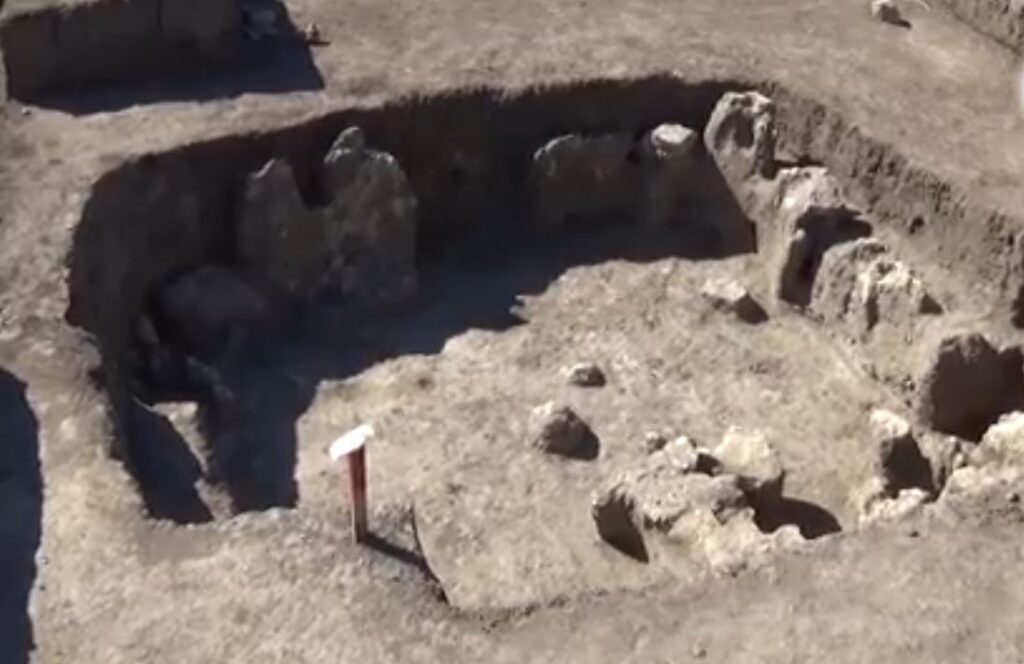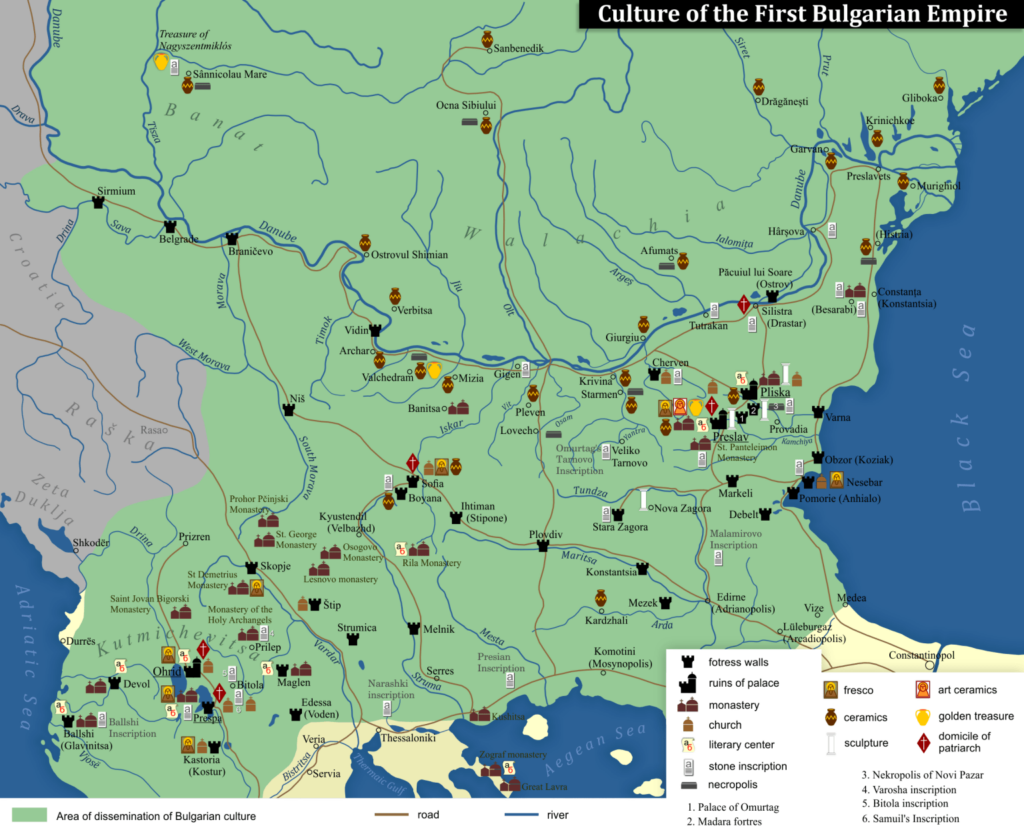Village Dated to First Bulgarian Empire Discovered
A previously unknown village dated to the ninth century A.D. was discovered in northeastern Bulgaria by a team of researchers led by Stanislav Ivanov of the Shumen Branch of Bulgaria’s National Institute and Museum of Archaeology in Sofia, according to an Archaeology in Bulgaria report.
The 9th century AD was a very turbulent time for the First Bulgarian Empire but also a prelude to its greatest rise, with its so-called Golden Age beginning in the second half of the century and lasting into the middle of the 10th century.
For the First Bulgarian Empire, the 9th century started with the rule of Khan Krum the Fearsome (r. 803 – 814 AD), and ended with the beginning of Tsar Simeon I the Great (r. 893 – 927 AD). It saw the conversion of the entire Bulgarian Empire from paganism to Christianity and the development and adoption of the Bulgaric (Cyrillic) alphabet under Knyaz Boris I (r. 852 – 889; 893 AD) ushering into the rise of the Old Bulgarian literary language.
The previously unknown medieval Bulgarian village has been discovered as a result of rescue excavations for the construction of the Hemus Highway, a road linking the Bulgarian capital Sofia with the city of Varna on the Black Sea via the Danube Valley in Northern Bulgaria.
An archaeological team led by Stanislav Ivanov from the Shumen Branch of the National Institute and Museum of Archaeology in Sofia explored the archaeological site of the 9th-century Bulgarian village in September 2020. More than 100 people, including 16 archaeologists, took part in the rescue excavations, BTA reports.
The site in question is located near today’s town of Gradishte, Shumen District, in Northeast Bulgaria. (“Gradishte” is an old Bulgarian word referring to a “fortress” or a “stronghold”.)

The archaeological team has unearthed about 17 decares (app. 4 acres) from the territory of the medieval Bulgarian settlement as part of the plot slated for rescue digs for the building of the Hemus Highway. They have dug up some 80 dugout dwellings, with the total territory and the total number of 9th-century homes in the village remaining unknown for the time being.





“At the present stage, we are unable to say how big the settlement was,” lead archaeologist Stanislav Ivanov is quoted as saying.
“The bulk of the archaeological site is a settlement from the First Bulgarian State. These are dugout dwelling which was typical for the population that was not of aristocratic origin. These are dug into the ground, dugouts of the classical type, which have also been studied in other sites as well,” Ivanov explains.
“We have detected about 80 dwellings so far. On the inside, they had wooden plaster which has not survived. However, in many cases, there was a filling between the plaster and the soil, which has been preserved. It was used as additional reinforcement of the very walls of the dwellings,” the archaeologist elaborates.
“In some sectors of the settlement, we observe the grouping of dwellings. It is unclear why that is. It may have been due to individual families, or due to random factors, or due to the fact that some of the dwellings were slightly earlier than the others,” he adds.
“We will have a clearer idea about that after the processing of all materials. That will tell us which dugouts were built earlier and which came later. There are cases of dwellings which were reused, up to three times, as indicated by the floor levels and other evidence,” Ivanov says.
In some of the dugouts from the 9th-century village from the time of the First Bulgarian Empire, the archaeologists have discovered kilns used for the making of household pottery items.
The excavations have yielded also numerous arrow tips. Ivanov cautions, however, that the village was hardly the site of a battle. Instead, the arrow tip finds demonstrate that the male population of the medieval Bulgarian settlement included numerous warriors.
The dozens of dugouts have yielded other artifacts such as knives, bone awls, and here and there some adornments, bronze rings being the most frequent ones, and some medallions. The researchers hypothesize that one medallion, in particular, may have been used as an amulet against curses.
“So far we have found no evidence of crafts and the production of artifacts,” Ivanov says.
For the time being, the archaeologists have discovered neither the necropolis of the 9th-century medieval Bulgarian village nor any commercial or storage facilities. However, they do not rule the possibility of coming across those, with further excavations expected to be conducted in the 2021 archaeological season.


During the rescue digs at the site near Gradishte in Northeast Bulgaria along the route of the Hemus Highway, the archaeologists have also found in deeper layers some prehistoric items from the Chalcolithic (Aeneolithic, Copper Age). Their presence is due to a nearby Chalcolithic settlement mound.
A large number of dugouts, some of them quite untypical in size and containing stone structures, have also been found during rescue excavations in 2020 in what was a previously unknown town from the 8th – 10th century right outside of Pliska, the first capital of the First Bulgarian Empire.





